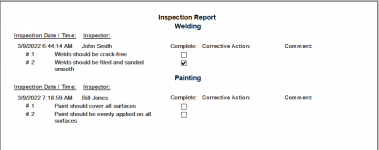Here's a picture of a form that uses an EAV design. This is an application that is used to produce all the documents required to issue an insurance policy. Each type of policy has different data requirements. Hence the EAV design. So the fixed properties are columns as you would normally expect but the other columns vary by policy type. When you create a new record for a customer, the policy type combo determines what fields are required and they are all appended in the afterUpdate event of the main form. This particular app is very flexible and is controlled by the user rather than the developer. I designed it so that if they started issuing a new type of policy and needed to add new data fields, they could. In your case, the data fields are fixed unless you get something new but it's probably something they want the developer to do for them than for them to do for themselves.
In order to handle the "required" aspect of data, it is the Word automation part that pulls all the EAV data for use in a word document and as each record is read, its properties are checked and if it is required for this document, then the value of the field must be not null.
If you want more details, I can go into the supporting tables if you want to go this way.
View attachment 98955



